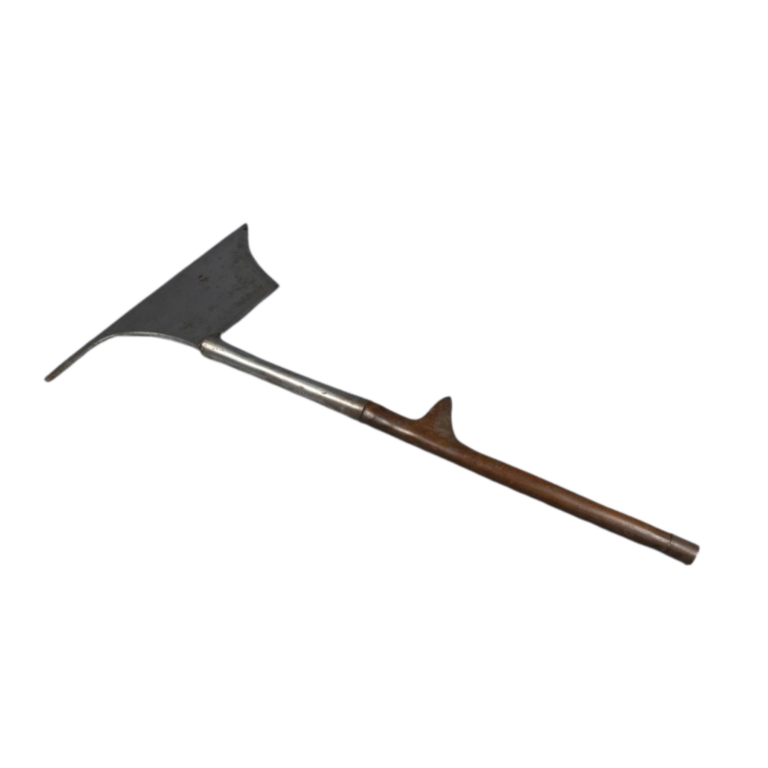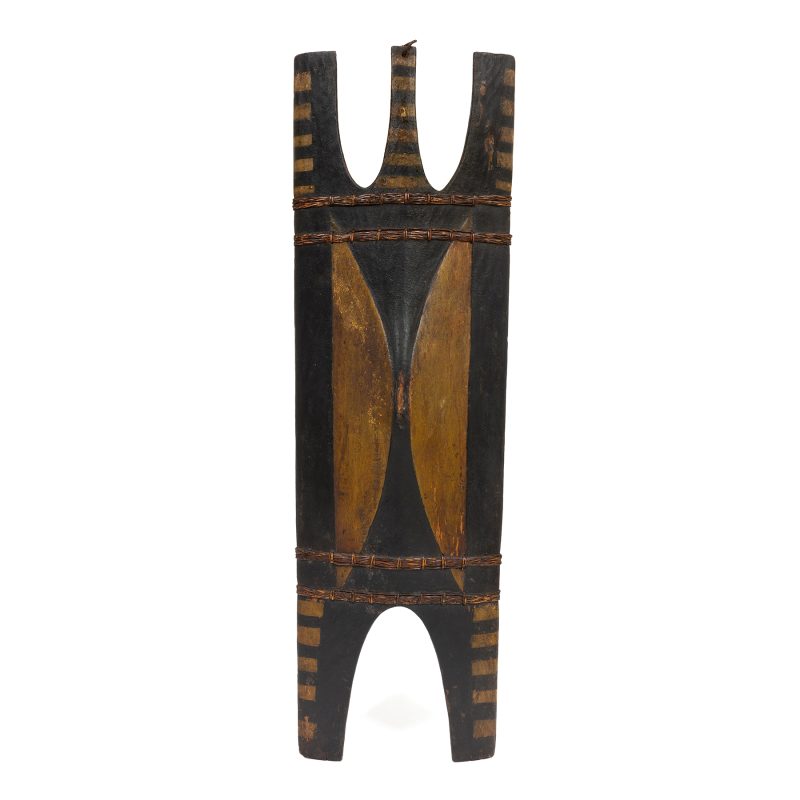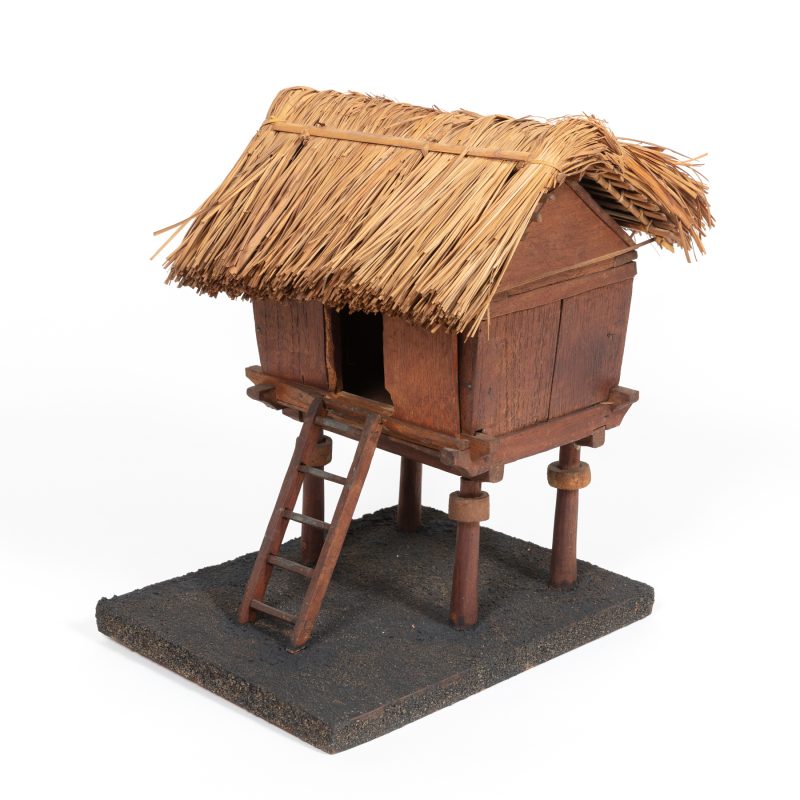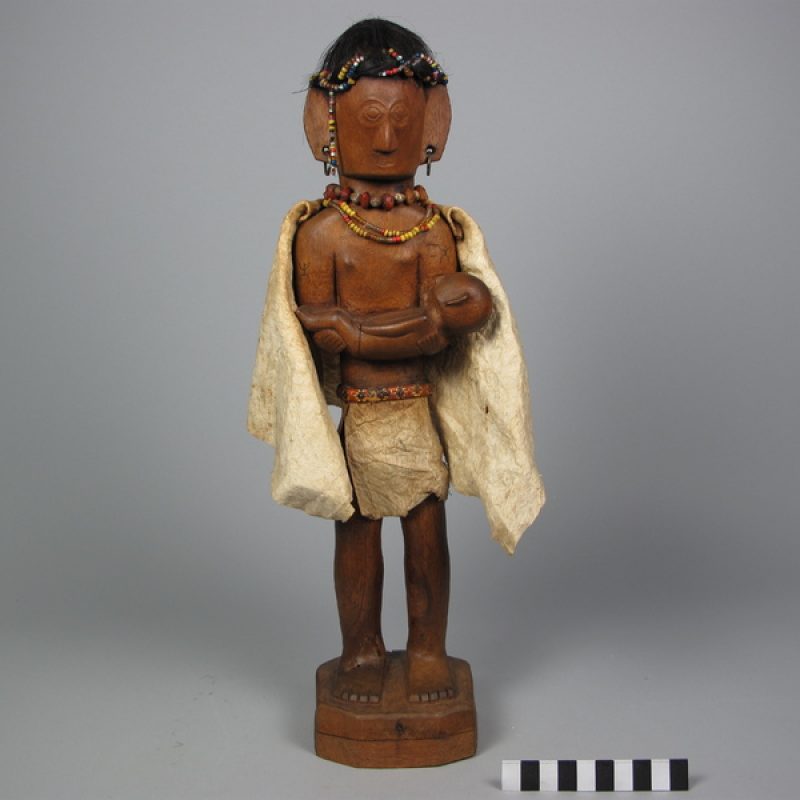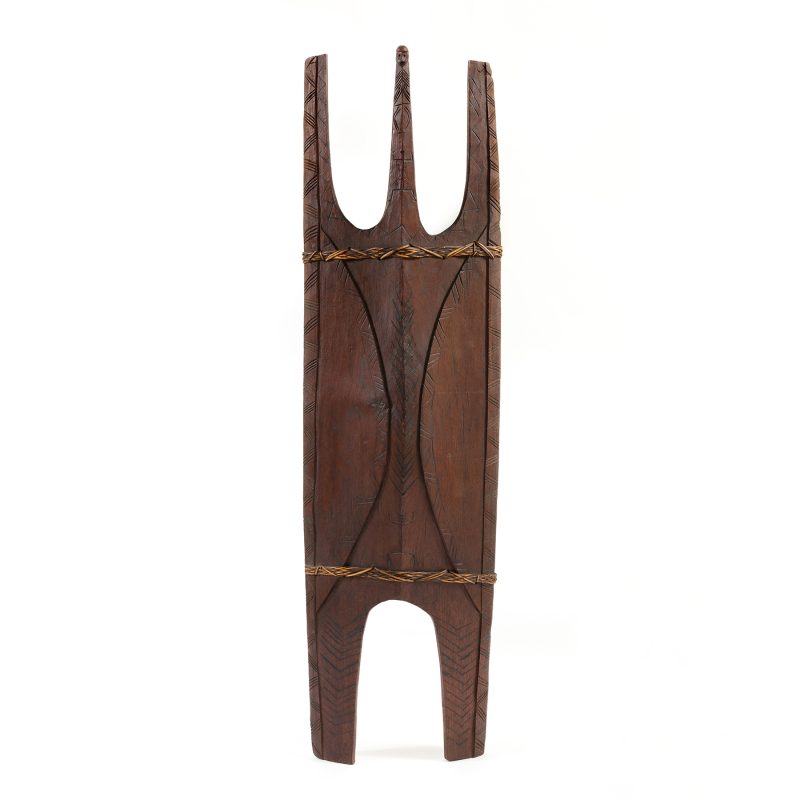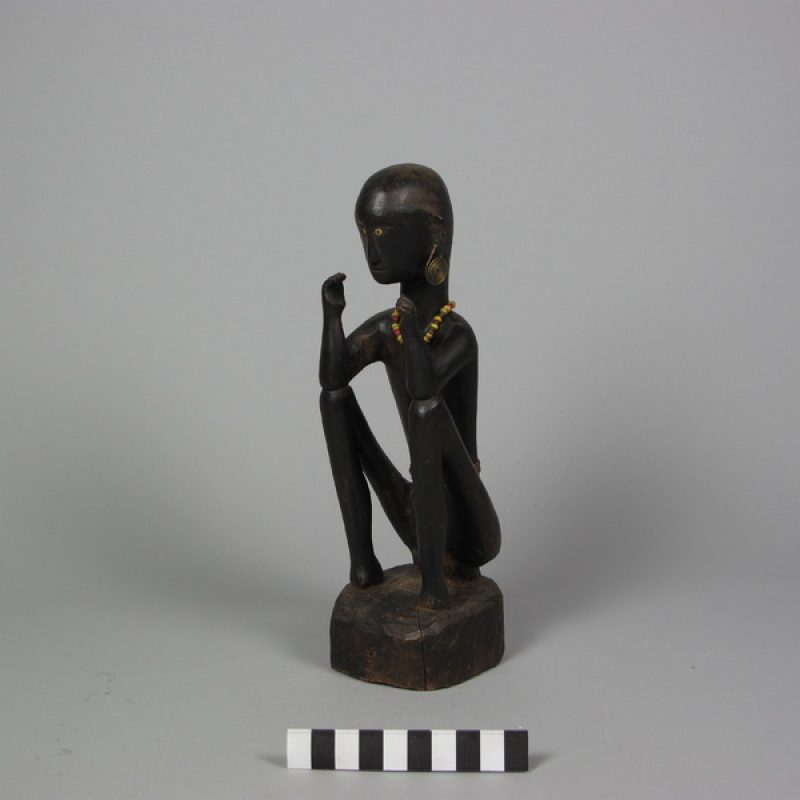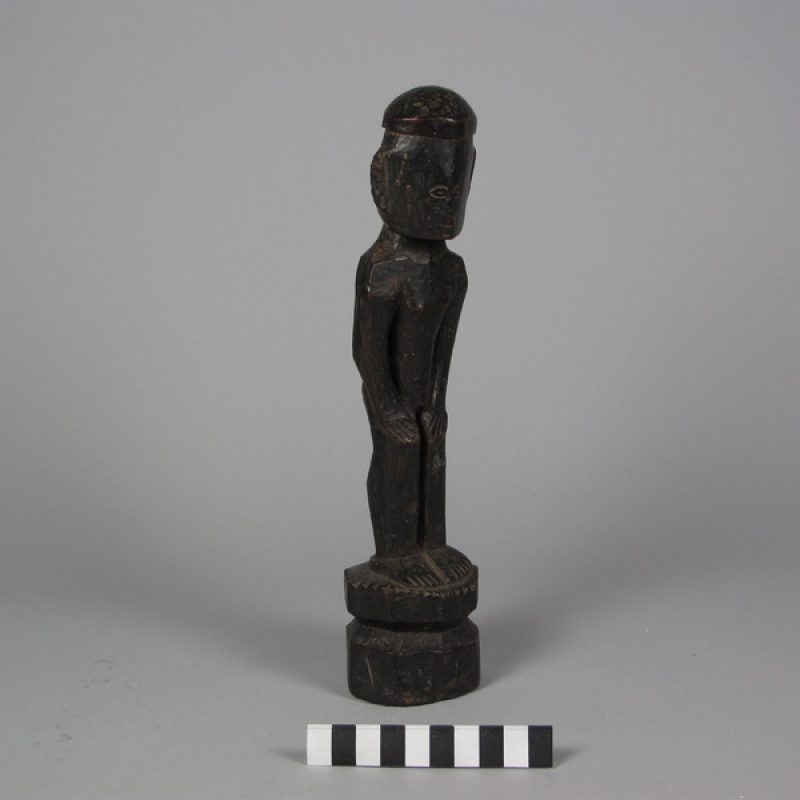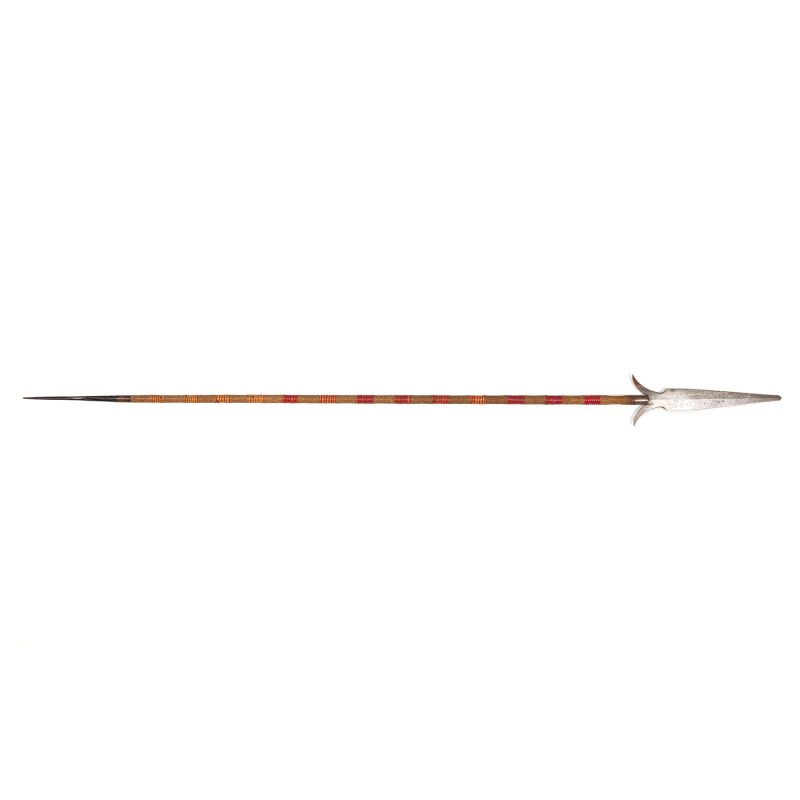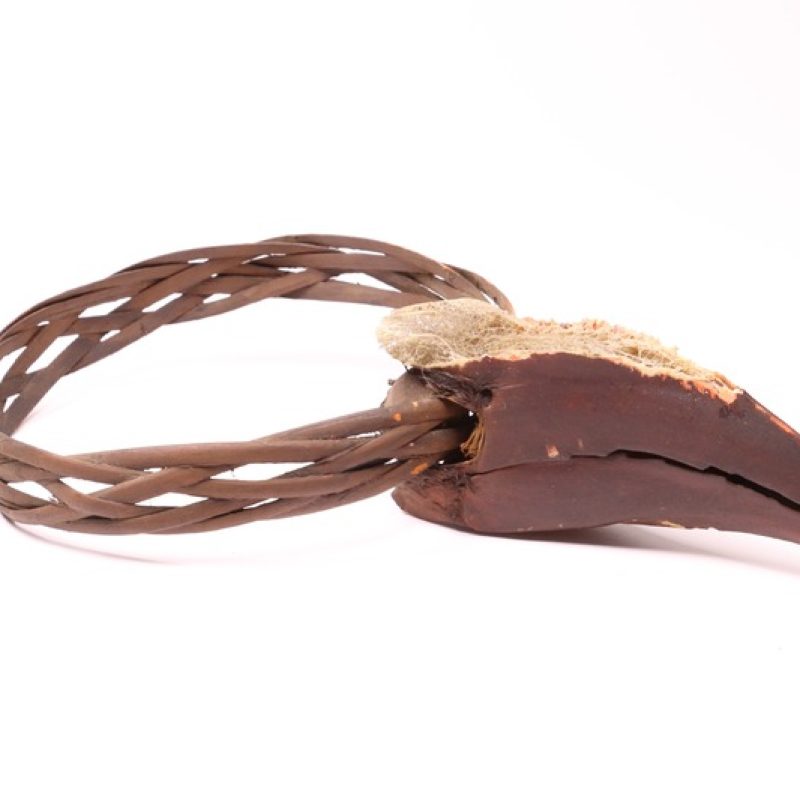Summary of results
It is a battleaxe probably made in Balbelasan, a settlement which, at the end of the 19th century, was part of the demarcation of Bontoc. Although it has not been possible to determine the specific time and circumstances in which the artefact MEB 134-154 was collected, we can speculate on the possibility that it was a spoil of war. This is given the context of military interventionism practised by the Spanish administration in the territory during the historical period in which the collector, an officer of the Army and the Civil Guard, was stationed there. The object was collected between the time of its arrival on 25 December 1882 and the holding of the Philippines Exhibition in 1887, where it was exhibited.
* Although the Ethnological Museum holds other artefacts that could correspond to the one on display at the exhibition, this is the only one that the institution’s inventories attribute to José Coronado.
Chronological reconstruction of provenance
This battleaxe was most likely made at Balbelasan, but we cannot, to date, determine when or under what circumstances it was collected.
The first record of MEB 134-154 is found in the Catalogue of the Philippines Exhibition held in the Retiro Park in Madrid during the summer of 1887. It is most probably the object that appears in the exhibition catalogue under the category ‘Two-handed Aligua, from id. id. [Igorots from Bontoc]’ (Catalogue: 278). After the event was over, many of the artefacts remained in the Museo Biblioteca de Ultramar until it was closed in 1896. This museum had been installed in the Palacio de la Minería, the site where these pieces were exhibited during the celebration of the exhibition, but the collection in which this artefact is included was probably not exhibited there, as it most likely made its way to Barcelona after the exhibition closed. According to the museography of the Museum of Ethnology and World Cultures of Barcelona, the collection in which the artefact is included was exhibited during the 1888 Barcelona Universal Exposition, although there is no evidence of this and it is possibly an error.
In August 1895, the collection containing the artefact was already in Barcelona. Specifically, in the neighbourhood of Sant Gervasi, where the collector lived. Between October and November of the same year, a technical commission sent by the Board of Museums of Catalonia examined the collection and, in this occasion, considered that it was not suitable for inclusion in Catalan museums. A year after the loss of the Philippine colony, and perhaps for that reason, it was accepted and finally deposited in the Museo Histórico Arqueológico in 1900.
In 1902, according to the statistical yearbook of the city of Barcelona, the collection was housed in the Museo de Arte Decorativo y Arqueológico, located in the Palacio Real (now the building of the Parliament of Catalonia); in 1903, in the Museo de Objetos Curiosos y Hechos Memorables; and, in 1907, in the Museo de Arte Decorativo y Arqueológico. These last changes were merely nominal, because in practice the artefacts remained in the same place, i.e., in the Ciutadella building.
In 1932, the Museo de Arte Decorativo was dismantled and the collections were divided between the Archaeology Museum of Catalonia (MAC) and the National Art Museum of Catalonia (MNAC) for their creation. The collection probably ended up in the latter, given the fact that documents relating to it—basically reports of artefacts—can still be found in the museum’s archives.
According to one of these reports, before 1941, the collections were transferred from the National Art Museum of Catalonia to the Historical Archive of the City of Barcelona and the Museo Etnográfico. Although no ethnological or ethnographic museum is known to have existed at this time, according to the museum curators, the project already existed in the 1930s.
The artefacts probably remained in the storerooms of the Historical Archive until, before 1949, the Board of Museums transferred the collection to form the Ethnology Museum of Barcelona, where it remains to this day.
Estimation of provenance
Although we are unable to determine the exact circumstances under which artefact MEB 134-154 was collected, it is possible that it is a battleaxe made in Balbelasan, a settlement in the northern part of the former colonial demarcation of Bontoc. According to anthropologist Albert Ernest Jenks, who did fieldwork among the people of Bontoc village (now Bontok), long-handled battleaxes were made in Balbelasan. This kind of axe came to the Bontoc village area through trade (Jenks, 1905: 129).
Possible alternative classifications
Aliwa made in Balbelasan, Igorot people.
Complementary sources
Bibliography:
Negociado de Estadística (1902). Anuari estadístic de la ciutat de Barcelona. Barcelona: Ajuntament de Barcelona. <http://hdl.handle.net/11703/94371>.
Negociado de Estadística (1907). Anuari estadístic de la ciutat de Barcelona. Barcelona: Ajuntament de Barcelona. <http://hdl.handle.net/11703/94376>.
Exposición General de las Islas Filipinas (1887). Catálogo de la exposición general de las Islas Filipinas celebrada en Madrid… el 30 de junio de 1887. Signatura: AHM/633416. Madrid: Biblioteca Nacional de España.
Jenks, A. E. (1905). The Bontoc Igorot. Manila: Bureau of Public Printing. <https://www.gutenberg.org/ebooks/3308>.
Sánchez Gómez, L. Á. (2003). Un imperio en la vitrina: El colonialismo español en el Pacífico y la Exposición de Filipinas de 1887. Madrid: CSIC Press.

